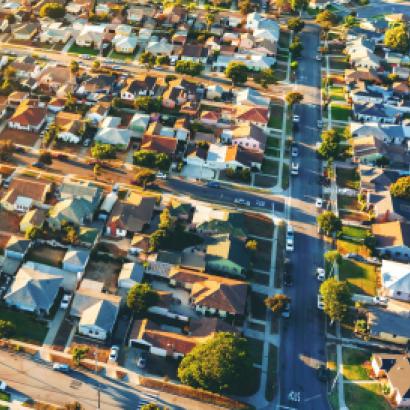- Politics, Institutions, and Public Opinion
- Campaigns & Elections
- State & Local
- California
Bernie Sanders is downright angry with Apple for its efforts to address California’s housing crisis. Last month, Apple announced it would contribute $2.5 billion, including $1 billion in new housing, $1 billion in mortgage assistance, and $300 million of Apple-owned land to be used for affordable housing.
Good news, yes? Apparently not for Sanders, who slammed Apple for not doing enough. Sanders called Apple’s announcement an act of “hypocrisy” and accused the company of “throwing pennies at a crisis that it helped create.” As you will see, Bernie’s twisted and confused logic leads him to look a gift horse in the mouth.
To begin, just how did Apple help create California’s housing crisis, according to Bernie? Apparently by not paying enough in federal taxes. Sanders who also called Apple a “tech industry tax evader,” believes that California housing would be much more plentiful and less expensive if Apple, and companies like Apple, paid more in federal taxes.
Sanders has proposed a federal tax on wealth that would be as high as eight percent, which is estimated to confiscate half the wealth of billionaires over 15 years. He has also proposed a 35 percent corporate tax, up from the current level of 21 percent, which would return US profit taxation to the being the highest in the world for developed countries.
Sanders would use part of the revenue from these taxes to support new housing initiatives. But the idea that taxing Apple’s profits at a higher rate and confiscating wealth from billionaires will solve California’s housing crisis is a fantasy, and a dangerous fantasy at that.
Putting aside for the moment the depressing effects that these taxes would have on the economy, Sanders’ housing plan would have a small impact on California’s housing. His plan calls for building 7.4 million units over ten years for the lowest-income households nationwide.
But California alone needs nearly 4 million units soon to resolve its crisis, and the most critical areas for housing are in relatively high-income locations, such as San Francisco, Los Angeles, Silicon Valley, and San Diego, where average home prices are as high as $1.4 million.
If California received a share of Sanders’s housing program dollars proportional to its national population share, and if that could be allocated to the most critical locations, I estimate it would account for only about 7 percent of the number of units required.
An important reason why the impact of the Sanders program would be so modest is that land and building costs are so much more expensive iin California than in the rest of the country.
California’s housing crisis has been created by chronically failed governance that has been perpetuated for decades. State and local governments, both through inaction and also through remarkably bad choices, have driven up housing costs by delaying and blocking new developments and by adding regulation on top of regulation.
California’s housing crisis began in the 1970s, when Apple was still a basement operation in the eyes of Steve Jobs and Steve Wozniak, and when zoning laws made it more difficult to build dense housing in urban areas. San Jose, which is the biggest city in Silicon Valley, has devoted 94 percent of its land to single-family homes.
But zoning is just part of the issue. Environmental laws, which also began in the 1970s, and which include the California Environmental Quality Act, have been used to delay and block development by interest groups ranging from unions to community activists. They twist developers’ arms with a broad range of demands, from employing union labor to paying for existing but unfinished neighborhood amenities such as parks, playgrounds, dog recreation areas, day care facilities . . . the list goes on.
Consider just how ridiculous it has become to build new housing in California. How long do you think approval took for a proposal for a new community? By the time all the litigation—primarily environmentally based as discussed above—was resolved, over 25 years.
How about the fees that local government demanded from an apartment owner who wanted to convert an underutilized apartment recreation room into two studio units in San Jose, one of the country’s most expensive cities to live in? San Jose wanted to charge the apartment owner $50,000, about $60 per square foot, for this 800-square-foot conversion. Just the extortion fee alone represents about 70 percent of the average national building cost.
And what about the owner of a San Francisco laundromat who wanted to replace the building with a high-density residential building, which is exactly what San Francisco politicians claim they want? The laundromat owner spent $1.2 million in legal fees and fought with city supervisors for six years before getting approval. And this was in the permit “fast track” lane. One of the reasons for the holdup was that the building would block the sunshine on a neighboring preschool and playground. By the way, haven’t these people heard about ultraviolet radiation and skin cancer?
These are just a few examples of the types of absurd road blocks that those who wish to develop California property must face daily, and why it is so costly to build in California. How costly? Try $425,000 per “affordable” unit, as of 2016. That cost has likely risen by about 15 percent since then, to about $470,000.
California cannot resolve its housing crisis until these issues are fixed, and thus far, there is little action from state or local politicians to move this needle.
And what of Sanders’s claim that Apple is a tax evader? Like Sanders, who used legal, generous tax deductions and tax credits to his advantage, Apple also uses legal tax deductions and credits for its benefit. Both Apple and Sanders use strategies to reduce their tax obligations. No organization nor person using legal strategies to minimize taxes should be called a “tax evader.”
The next time Sanders uses his smartphone, he should think for a moment about Apple, and how it risks its capital and ideas to dream up new products that have transformed our society. If he does this, he just might learn some economics and propose better policies.
















